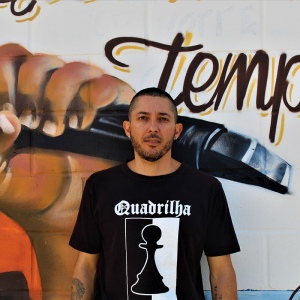
Francisco Celso Leitão Freitas is a history teacher and the Pedagogical Director of the Respect and Attitude Association (AREA, for its initials in Portuguese) in Brazil. A a cultural producer and specialist in inclusive education, he is the creator of, and collaborator on, many educational and cultural projects aimed at empowering Black, poor, and marginalized youth in Brazil’s Federal District. The impact of his pedagogical-cultural interventions has been recognized through a series of prizes, including the HIP HOP ZUMBI Award (2011 and 2012), the IFÁ AJE Award (2012), the Culture and Citizenship Award (2016) and the UNICEF Itaú Award (2017 and 2018). Additionally, in 2020, Francisco Celso won the Seal for Innovative Practices in Federal District Public Schools and found himself among 50 finalists for the Global Teacher Prize, taking on the role of ambassador for the Varkey Foundation in Brazil. Following his participation in a training organized by AIPG’s Educational Policies Program, the Secretary of Education of Brazil, and the Federal Ombudsperson’s Office in March of 2019, Francisco Celso collaborated with his colleagues on the development of the Citizenship and Democracy in School project with 25 students of the Socioeducational Unit of Santa Maria.
How do you begin your work in the area of socioeducation? Who and/or what inspires you to continue this work?
I am a history teacher and part of the Federal District of Brasilia’s teaching staff since 2008. I have always worked in schools exposed to great social vulnerability, located in peripheral regions of Brasilia. I like to give classes to children of the working class because I am one of them, thus I identify with them and I believe in them. My pedagogical activities have always focused on the values of a culture of peace and human rights. I use various artistic languages, especially RAP, as a tool.
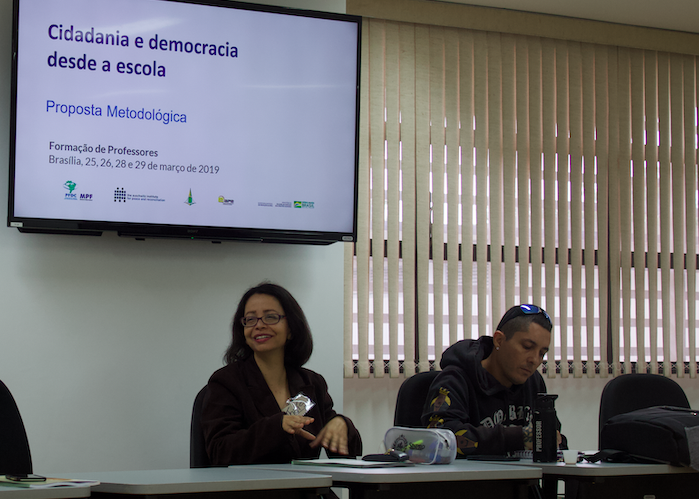
My interests in these themes led me to work as Coordinator of the Ethnic-Racial Assistance Center of the Office for Diversity Education of the Federal District’s Secretariat of Basic Education in 2013 and 2014. During this period, I had my first contact with the socioeducational system when I was invited to organize a training activity with the group of teachers from the Recanto das Emas Internment Unit. I realized then that the adolescents there constitute an extremely vulnerable group, one that needs attention, affection, and empathy. It was then that I decided to take on the challenge of working in the socioeducational system and, since 2015, I have been an educator at the Santa Maria Internment Unit where I teach history classes and develop the RAP (Resocialization, Autonomy, and Protagonism) Project.
What inspires me to continue working in the socioeducational system is seeing how, through the RAP Project, graduates of the system – who have become members of the hip hop scene in the Federal District – are collaborating to advance the resocialization process. This is being done by writing letters and participating in parties, rhyming battles, poetry slams, seminars, and publicity campaigns.
How and why did your concern for bringing new ways of working with young people begin? What paths have you explored? Please tell us a little bit about your projects.
In addition to being a history teacher, I am a cultural producer and I have always used diverse artistic languages as a pedagogical tool, in the understanding that art can touch the minds and the hearts of people far beyond the ways that eloquent discourse can.
When I started to work in the socioeducational system, I realized that the young people did not see themselves in the stories contained in textbooks, but that they identified with the stories narrated in rap lyrics. From that point, I began using rap as a pretext to frame discussion on human rights, diversity, and the sustainability of the basic educational curriculum in the Federal District. This allowed the contents of my curricular component, history, to become transcendent. From here, the RAP Project was born.
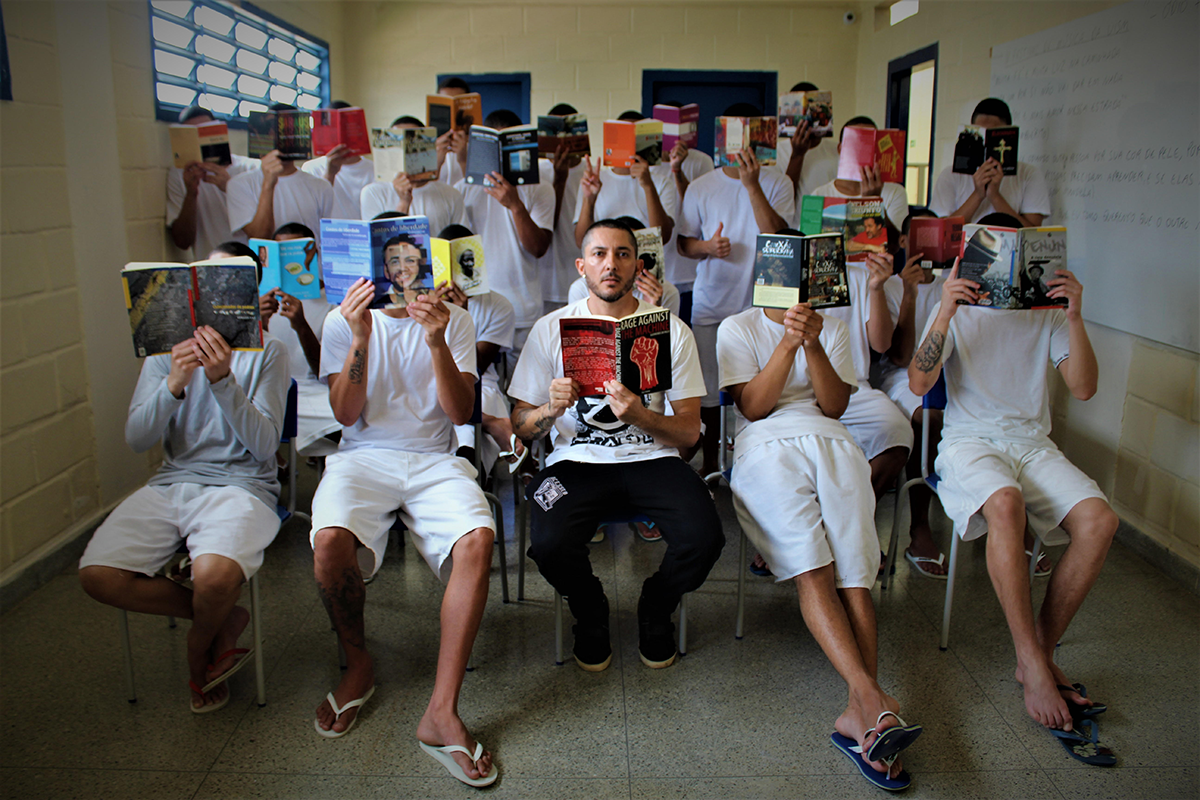
The name of the pedagogical/cultural project, RAP, alludes to the musical genre (rhythm and poetry) and uses the musicality and poetry of rap as a pedagogical and emancipatory tool that can promote the values of a culture of peace and human rights, given its historical background. Since 2015, the project has facilitated work with adolescents who do not have liberty and previously lacked access to a socioeducational program in the Santa Maria Internment Unit, where 80% of the students identify as Black and 100% reside in the Federal District and the surrounding regions.
Our proposal with the project is to reduce the causes of exclusion, reinforcing the transformation of young people through art and culture. In addition to RAP, we promote other activities, as well. Based in the values of hip hop culture, students dialogue with various artistic languages such as cinema, theater, poetry, or literature by marginalized peoples, among others, through activities such as: Sarau Dá a Voz, Roda de Conversa “Abre a Roda”, Cine Debate “RacioCine” e o Festival de Música “No Ritmo da Socioeducação”.
The marginal-peripheral linguistic character of rap, as a part of urban culture and, especially, the hip hop culture that is very present in the lives of adolescents in accordance with socioeducation methods, resulted in it being more attractive to students. By associating this language with other significant contents, the project has helped to encourage critical thinking among young people related to the reality that they experience and to stimulate the creation of strategies to confront difficulties related to the conditions of social vulnerability that many find themselves in.
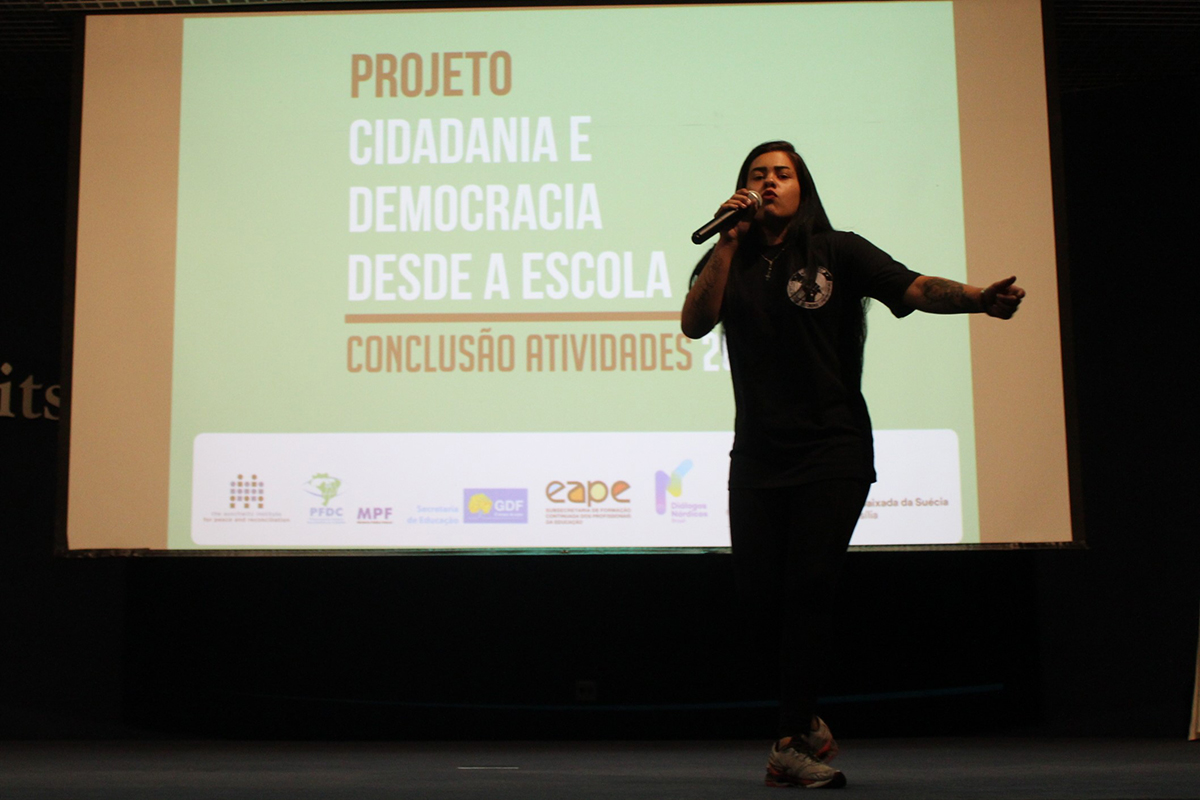
The most visible results include learning to write better, to express one’s self more effectively – orally and physically, as well as increases in students’ capacities for argumentation and their level of self-esteem. These improvements reflect the objectives of the overall dialogue, centered around peace culture and human rights, that we outlined to guide the program.
In 2017, the project won the local category of the Itaú UNICEF Award. The following year it won the local, regional, and national stages of the same award. In 2019, the video clip “18 Reasons (for not reducing the age of criminal responsibility)”, which exclusively starred socioeducators participating in the project, was shown at Cine Brasília during the 52nd Brasília Festival of Brazilian Cinema. Moreover, the documentary “Egressos” (“Graduates”) took the prize for Best Film by the Technical Jury, Best Film by the Popular Jury, Best Photography and Best Soundtrack at the VI Mostra Cine Braza. In 2020, we received the Seal of Innovative Practices in Public Education in the Federal District and I was chosen as one of the 50 finalists of the Global Teacher Prize (considered to be the “Nobel Prize of Education”) while I became one of the ambassadors of the Varkey Foundation in Brazil.
Thinking more broadly, how do you see your work and the field of education contributing to the prevention of genocide and mass atrocities?
Throughout history, escalations of violence, including genocides and other atrocities, are preceded by the violation of basic rights. In this sense, education represents a fundamental part in confronting and preventing violence.
In Brazil, the genocide and incarceration of young people is ongoing, especially Black youth who are poor and at the periphery. According to data from the Institute of Applied Research represented in the 2019 Atlas of Violence, 35,783 young people were murdered in Brazil in 2017. This figure represents a rate of 69.9 homicides for every 100,000 young people in the country, a record rate over the past ten years. Homicides were the cause of 51.8% of deaths among young people aged 15 to 19 years; 49.4% for people aged 20 to 24; and 38.6% of deaths among young people aged 25 to 29. This makes homicides the main cause of death among young Brazilians in 2017. Moreover, according to IPEA, 75.5% of homicide victims were Black individuals.
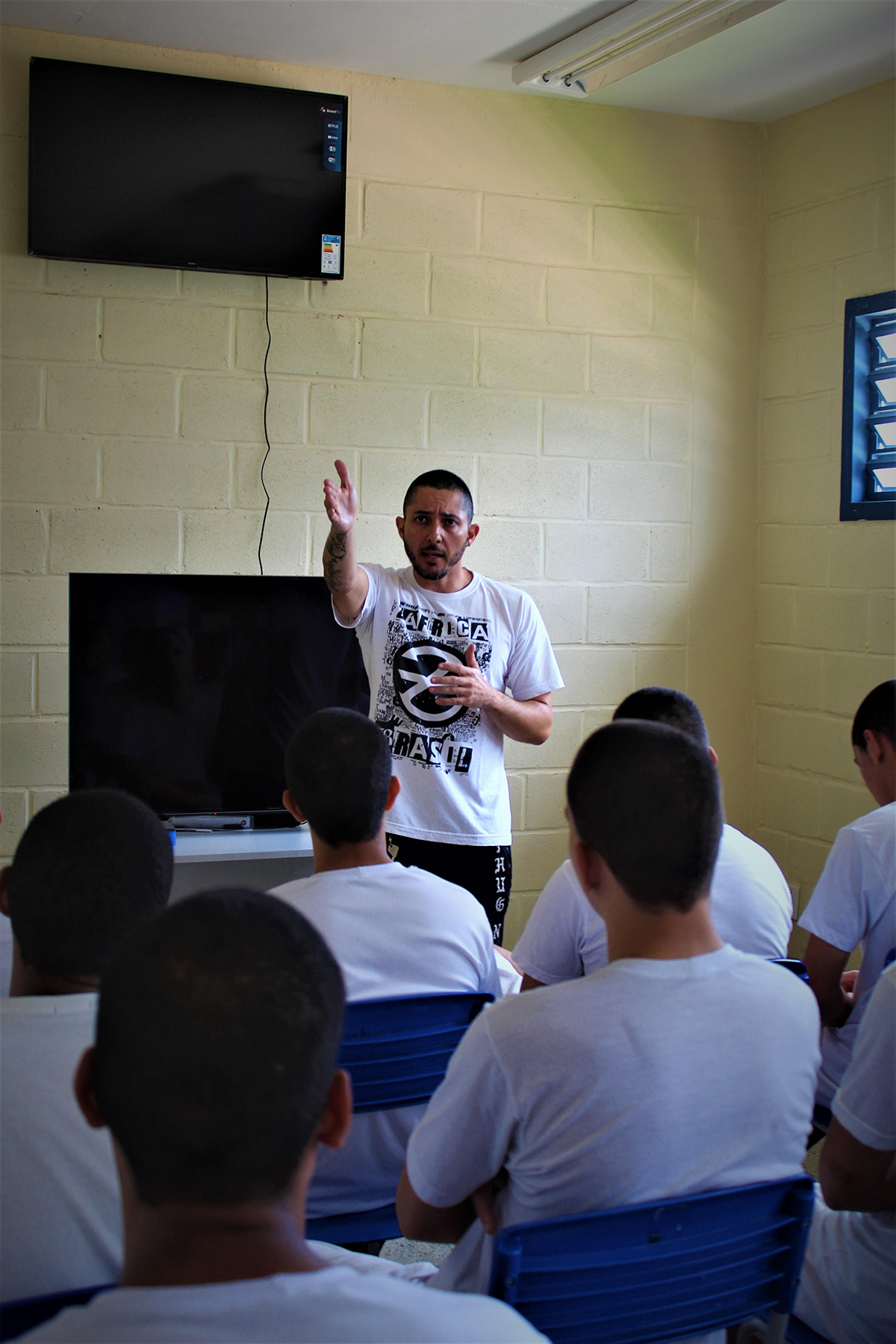
With regard to incarceration, according to data from the National Council of the Public Ministry’s Prison System in Numbers project, Brazil has the third largest imprisoned population with more than 700,000 detainees. Among them, 61.7% are Black or Brown people. Its important to remember that 53.63% of the Brazilian population considers themselves part of this group. Whites, inversely, represent 37.22% of prisoners, while accounting for 45.48% of the overall population. Additionally, according to the National Penitentiary Department, in 20014, 75% of incarcerated people had only completed primary school, a figure that correlates with low-income communities. In the socioeducational system, it is no different. A large majority of students are Black, poor, and/or peripheral and have low levels of academic access and achievement.
Given this, we understand that, in order to confront this genocide and this incarceration of youth, especially those who are Black, poor, and peripheral, we need local actions with global effects and global actions with local effects. The RAP project is a form of local action that has a specific audience. However, its effects are global and its methodology can be replicated in other contexts.
In your opinion, what projects or actions have been particularly successful in meeting the challenges that you and your students face? What actions or public policies could best support initiatives like these?
In the socioeducational system, the most effective actions are those that begin at the reality of those being educated and value their previously acquired knowledge, their literacies, and their methods of being, acting, thinking, and expressing themselves. Traditional approaches, when applied to the socioeducational system, are destined to fail, as participants do not emerge from traditional schools having prepared for the specifics of this context.
Another big particularity of the socioeducational system is the turn-over. A class that I teach today will not be the same next week. Thus, we need to plan classes that are meaningful for students at the moment of delivery, as it is possible that continuity will be made impossible.
In my view, the primary flaw in the socioeducational system is the lack of effective public policy for monitoring graduates. When they are following the socioeducational method and attending classes at the Teaching Center, us teachers manage to win many hearts and minds and collaborate with their resocialization process. However, when they finish, they return to the same cycle of violence and rights violations that is difficult to break.
To learn a bit more about the RAP Project’s cultural pedagogical initiatives, please visit our social network pages:
Instagram
Twitter
Facebook
YouTube
AreaDF.com
Spotify
Deezer
